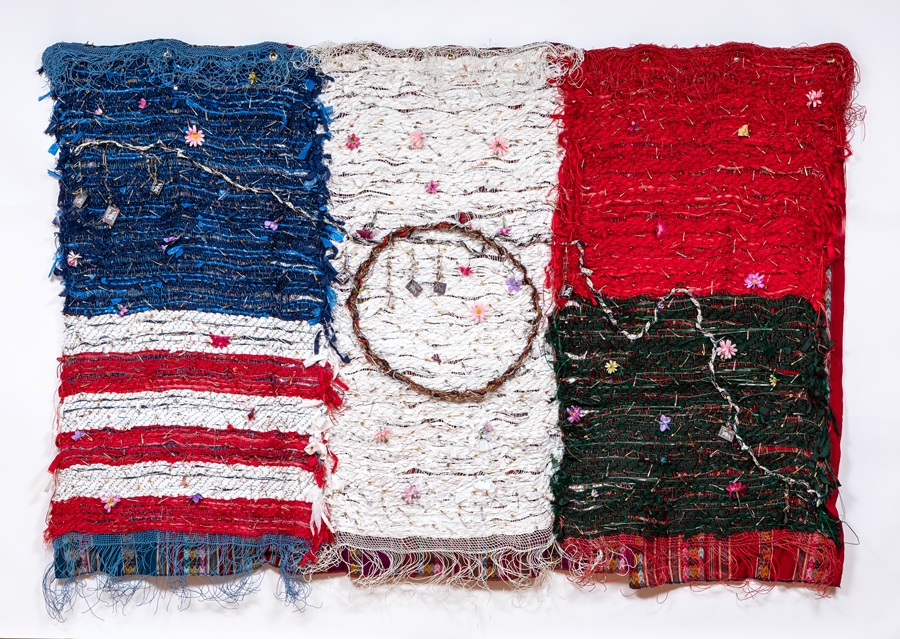
The School of Art in the Fulbright College of Arts and Sciences welcomed art historian Jenni Sorkin as visiting professor for the January intercession course 'American Craft, Material Culture and the Contemporary' in collaboration with Atlanta University Center Art History and Curatorial Studies Collective and Crystal Bridges American Museum of Art.
Sorkin is an associate professor at the University of California, Santa Barbara, department of history of art and architecture. She specializes in 20th and 21st century art and craft histories, and was a consultant and catalog author for the Crafting America exhibition that opened Feb. 6 at Crystal Bridges.
"For three years now the January intersession class has been the art history program's way of kicking off the new year with an especially exciting course offering," said Lynn Jacobs, art history program director for the School of Art. "But this year has been even more exciting than ever as we partnered with the AUC Art History and Curatorial Studies Collective for the first time, welcoming a cohort of their students to join the U of A students for a fascinating exploration of American contemporary craft by Jenni Sorkin."
As a specialist in American studio craft, Sorkin was invited to teach this course in conjunction with the exhibition Crafting America, providing students a unique vantage of the exhibition while expanding their knowledge on the roots of craft training.
The course was designed to bring together a range of students from diverse academic, ethnic and racial backgrounds.
Jacobs was introduced to the AUC Art History and Curatorial Studies Collective through colleague Cheryl Finley, inaugural director of the program and distinguished art history visiting professor at Spelman College.
The AUC Art History and Curatorial Studies Collective is an innovative program aiming to shape the future of the art world and position themselves as the leading incubator of African American professionals in these fields.
Finley described the AUC Art History and Curatorial Studies Collective as a unit preparing the next generation of art historians and curators. The AUC Collective seeks to build a network for students to experience innovative education and internships and to learn about different areas and possibilities within the art history field. The hope is that the students will become a new era of art historians.
Six students from the program attending Spelman College and Clark Atlanta University joined School of Art students to learn from Sorkin. Thanks to the Walton Family Charitable Support Foundation gift, Jacobs extended scholarships paying for the enrollment to the U of A and course to all six students from the AUC Art History and Curatorial Studies Collective.
Sorkin describes American craft history as a rapidly growing area within the academic field.
She writes on the intersections between gender, material culture, and contemporary art, working primarily on women artists and underrepresented media, such as ceramics, textiles and glass.
"The handmade and skilled work have always been integral to modernism, but the five historic craft fields: textiles, metals/jewelry, ceramics, glass, and wood, have historically been sidelined or designated as decorative or functional arts, rather than fine arts traditions such as painting and sculpture," said Sorkin. "Craft history is where women and non-white artists have often been historically consigned: at the bottom of the hierarchy, their work overlooked by museums for collection and display. There has been a reckoning in museum culture as in every other aspect of contemporary American life: to rectify and diversify historic wrongs."
Students attending the class were given insight into the deep origins of craft training. Sorkin shared there is a long history during the interwar period, between World War I and II, of setting up craft programs for returning war veterans, particularly ceramics, which was often taught by women artists who faced sexism in more academic settings.
She described how wheel-thrown ceramics was considered a discipline perceived as meditative, it could quiet the minds of battle shocked veterans, or in today's terms, it could be enormously beneficial for people experiencing symptoms of post-traumatic stress disorder.
The course was an introduction to the historic and contemporary issues surrounding craft.
Those issues and discussions were enhanced byCrafting America exhibition curators, Jen Padgett and Glenn Adamson, who joined Sorkin in the class to offer additional background and an overview of the exhibition.
In addition, Sorkin invited Aleesa Pitchamarn Alexander, assistant curator of American art at the Cantor Art Center at Stanford University, and Juliana Barton, American Council of Learned Societies leading edge post-doctoral fellow at the Center for Craft in Asheville, North Carolina, to speak to the class.
Sorkin's guests were able to give students a variety of perspectives about working within and outside institutions.
"We are incredibly proud of the success of this course and the high level of collaboration Lynn brings to the art history program and school," said Marty Maxwell Lane, associate director of the School of Art and associate professor of graphic design. "Lynn's leadership embodies the mission of the School of Art and the gift provided by the Walton Foundation, creating innovative programming and high equality education for our students and students across the nation."
Contacts
Kayla Crenshaw, director of communications
School of Art
479-321-9636, kaylac@uark.edu